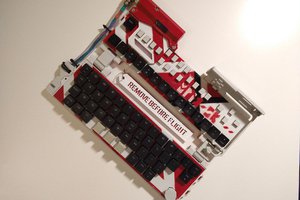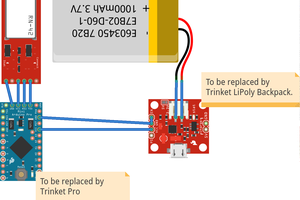This involves replacing the basic PS/2 brain in the keyboard with a new USB-capable one. Additional features I'd like to add to the keyboard:
- Multiple user-defined key maps that can be uploaded via USB and easily toggled between on the fly (I want this to replace my Orbweaver)
- A TrackPoint module (below N and to the left of the up arrow) and some thumb-operated mouse buttons (below Enter and Space)
- Possibly a scroll wheel or two (ideally a tilt-scroll wheel mounted to the left of H and N, or to the right of G and B; not sure which yet)
- Media control keys - both transport control (Play/Pause/Stop/Next/Prev) and volume control
- The ability to cut the keyboard in half and move the two pieces independently, with a tether between them
- Maybe even replace/augment the thumb buttons with something more akin to the DataHand's thumb configuration (modifiers on the sides?)
 David H. Bronke
David H. Bronke
 mkdxdx
mkdxdx
 tecywiz121
tecywiz121
 Julian Calaby
Julian Calaby
 RasmusB
RasmusB